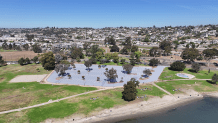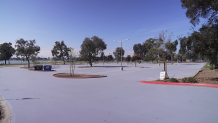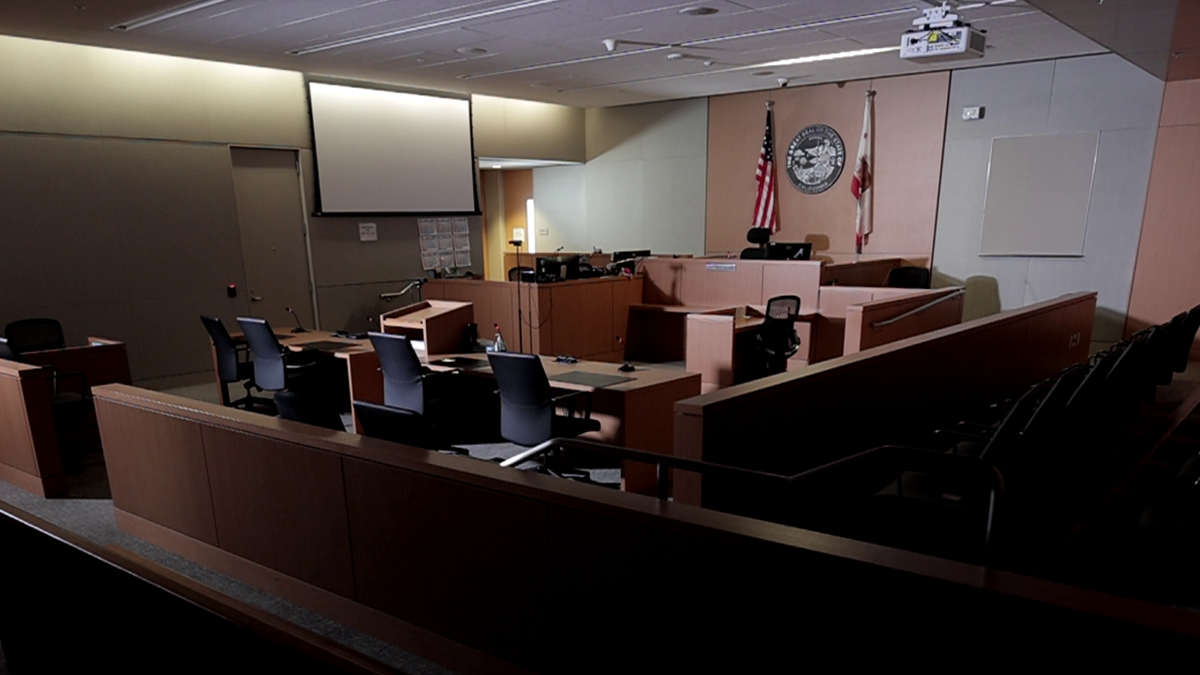After months of closures, the city of San Diego reopened a parking lot in Mission Bay with a new reflective coating designed to lower temperatures. NBC 7 investigative reporter Alexis Rivas explains.
The sun is setting later, and more San Diegans are taking advantage of those extra few hours of daylight by enjoying the city’s parks. One area of Mission Bay Park is back open and has a brand new look.
Instead of the typical black asphalt of most parking lots, the northeast lot at De Anza Cove is now light gray. Off and on for more than a year, families who wanted to park there couldn’t. It wasn’t clear what was happening.

So four months ago, NBC 7 Investigates asked the city of San Diego for an interview. A city spokesman turned us down, saying no single city official could answer all of our questions. But over dozens of emails back and forth, we got some answers.
Get top local stories in San Diego delivered to you every morning. Sign up for NBC San Diego's News Headlines newsletter.
The surface of the parking lot is coated with a unique product called Cool Seal, designed to reflect light instead of absorbing it. It’s designed to make temperatures in the area cooler, depending on the conditions.
The technology is in line with other efforts to lower what’s referred to as the “urban heat island” effect. Cities are typically warmer than rural areas because they’re covered in surfaces that absorb heat.
Other cities like Los Angeles, Phoenix and Dallas have spent millions of dollars on cool pavement technologies. The city of San Diego is just beginning to try it out. The De Anza Cove work is part of a pilot program to add reflective surfacing to two parking lots. The second lot is also along Mission Bay – but at Sunset Point Park.

The city was already spending millions of dollars to repave the lots. Trying out the new seal will add an extra $184,000 to the $4.5 million cost for both lots. The city spokesman told NBC 7 Investigates that the money for the seal top tests came from the Mission Bay Park Improvements fund.
Investigations
Construction at the Sunset Point Park lot won’t begin until the city renovates a public bathroom at that site. That is scheduled to begin this spring.
The science of surfaces

While the lot sports a new light look, experts like UCLA urban planning professor Kelly Turner say it’s the way they make us feel that matters.
“The world is getting warmer, and we’re really concerned about making our environment safer for people when they’re outside,” Turner said. “Surfaces like asphalt are really, really hot because they soak up a lot of the sun’s energy and slowly re-radiate it back throughout the day.”
Turner said a lighter surface can quickly reflect more of the sun’s heat and drop the overall temperature in an urban area by a couple of degrees, even cooling nearby buildings. In fact, many buildings paint their roofs white for exactly that reason. Cooler buildings mean energy savings, in the form of lower air conditioning bills.
But some researchers question whether these parking lots, which both border a breezy body of water, isolated from buildings, were the best spots to test.
The city spokesman said San Diego officials chose the locations because they were similar to other city parking lots and for more reasons than just their impact on heat, which include:
- Studying the coating application process
- How the coating stands up to heavy vehicle usage
- Long-term maintenance and potential associated cost savings
- Benefits that help meet the City’s Climate Action Plan goals
Turner was part of a UCLA study that showed that more research needed to be done to know the real benefits of cool-pavement technology.
Turner said the point isn’t really to cool off the park. In fact, during the middle of the day, she said, this area might feel even hotter. The point is to cool the overall temperature across the greater city area.
“This is an intervention not really for people outside,” Turner said. “This is an intervention for the whole city.”
Turner said lighter pavement is definitely one way to start but the No. 1 way cities and people can get cooler is by adding more trees to create shade. Turner said shady areas can feel 20-30 degrees cooler, whereas reflective pavements can only decrease temperatures by a few degrees.
NBC 7 Investigates also asked the city why the De Anza Cove parking lot project took as long as it did (about 13 months from start to finish). A spokesperson told us:
"The parking lot initially closed in February 2024, reopened during the summer construction moratorium from May 27, 2024, to Sept. 8, 2024, and closed again on Sept. 9, 2024, to allow for completion of the work. While the project resurfacing was a significant part of the scope, work also included the removal and replacement of existing sidewalks, installation of new sidewalks, decomposed granite walkways, flashing pedestrian crosswalk beacon along Mission Bay Drive, public utility improvements for future electric vehicle charging stations, and irrigation lines throughout the parking lot, and the planting of 39 new trees. Work was substantially completed in December 2024; however, unforeseen minor material defects prevented the reopening until March 11, 2025.
We also reached out to the company that produces the reflective coating the city used at De Anza Cove. It didn’t respond to our repeated requests for an interview.



